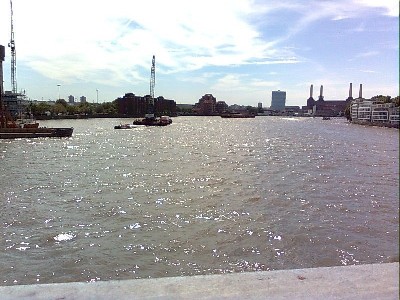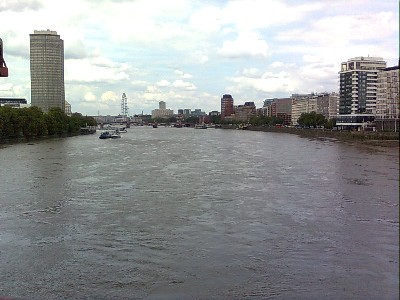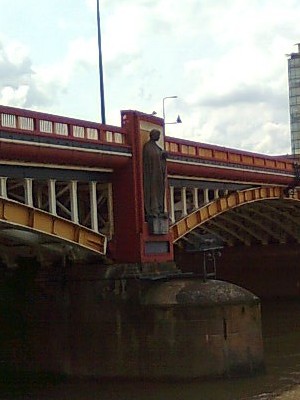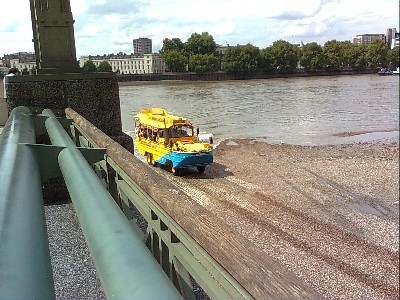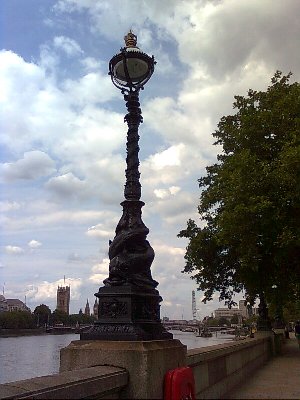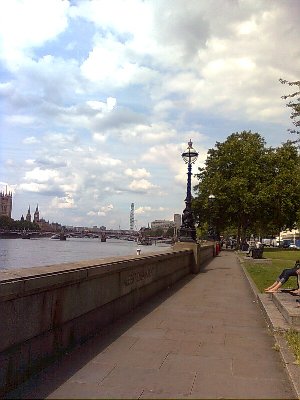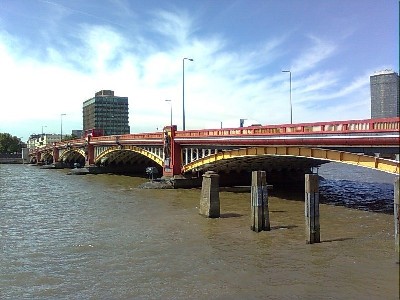
The first Vauxhall Bridge was opened in 1816 and consisted of nine cast iron arches with stone piers. It was the first cast iron bridge to be built over the Thames. In 1881, the two central piers were found to be unstable and were removed. Shortly afterwards the bridge itself was found to be in a poor state and in 1898 it was demolished and a temporary bridge put in its place. The new bridge was to be built of concrete clad with granite but during the construction of the foundations it was realised that the clay would not be able to take such a heavy superstructure, so plans were changed and a steel bridge was built instead. The five arched bridge was finally opened in 1906. As soon as it was opened there were complaints that the bridge was too plain, so some thought was given as to how it could be decorated and in 1907 monumental bronze statues were erected above the piers. On the downstream side are representations of Astronomy, Fine Art, Local Government and Education, while on the upstream side are figures of Pottery, Engineering, Architecture and Agriculture. It is the only Thames bridge in London to be decorated with sculpture. The two and a half metre tall railings were replaced with a lower, more attractive balustrade in 1973. The bridge was the first in Central London to carry trams, first horse-drawn and then later electric, the last of which ran in 1951 when they were replaced with buses. Evidence of another modern mode of transport can be seen on the south bank just past the bridge in the form of the slipway used by amphibious buses. The oldest bridge-like structure to be found in London can be seen at low tide alongside Vauxhall Bridge. It consists of two rows of wooden posts which would have carried a deck of some sort. It is thought to have been built 3,500 years ago in the Bronze Age around 1500 BC. However, 600 metres downstream from this structure, six timber piles of up to 0.3 metres in diameter have been found and dated to the Mesolithic period of 6,000 years ago. Their function is as yet unknown. This is a particularly exciting find as structures from this period are very rarely found anywhere in Britain. Sadly I have been unable to see either set of posts. |
